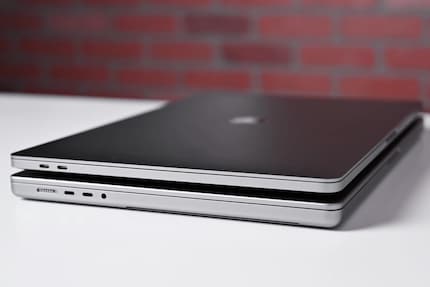
Background information
Tandem OLED is a crazy stroke of genius
by Samuel Buchmann

According to "Bloomberg", the iPad Pro heralds a new design era at Apple: Devices are getting thinner again. Unlike the last time, however, this is not at any price.
Designing devices to be as thin as possible is nothing new at Apple. In recent years, however, the focus has seemed to shift more towards functionality and performance. Now, according to a report from "Bloomberg", the technology giant is returning to the path of minimal thickness.
The iPhone 17 could become the thinnest iPhone in a long time in 2025. Apple is said to be working on new display technologies and battery designs that won't compromise on battery life or performance

A new housing technology is to be used for MacBooks that enables thinner yet stable laptops. This would be particularly important for the MacBook Pro, where customers expect a robust device. One possible key to thinner MacBooks is tandem OLED displays. They require less space than the previous LCDs and still offer high brightness and colour accuracy.
The well-known analyst Ming-Chi Kuo also reports that the upcoming Apple Watch Series 10 will not only have a larger screen, but also a thinner case. This combination could be achieved through the use of new materials and a more efficient arrangement of internal components.
If the rumours are true, they would indicate a general reorientation of Apple's design philosophy - a return to the maxim "thinner is better". In the past, this has led to problems: The old MacBook Pro with Intel chips tended to overheat. The large version of the first iPad Pro was so thin that reports of bent tablets became more frequent.
Let's hope that Apple has learnt from these mistakes. The M4 iPad Pro shows that a thin design does not have to come at the expense of performance or battery life. This is thanks to Apple's efficient M chips. Stability, at least, doesn't seem to have deteriorated either.
My fingerprint often changes so drastically that my MacBook doesn't recognise it anymore. The reason? If I'm not clinging to a monitor or camera, I'm probably clinging to a rockface by the tips of my fingers.
From the latest iPhone to the return of 80s fashion. The editorial team will help you make sense of it all.
Show all